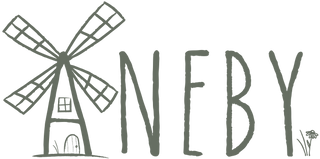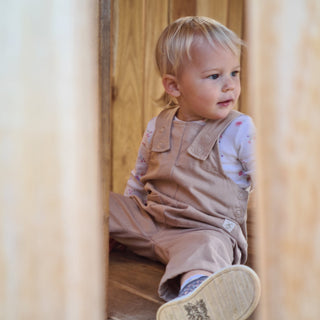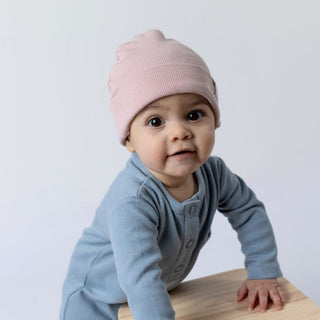Baby Clothes Size Chart & Calculator
When I was expecting my first baby, I thought “newborn” was a one-size-fits-all label. Then my little one arrived two weeks early—and half of the tiny outfits I’d washed and folded were already too snug.
If you’ve ever stood in front of a rack wondering what size 70 or 0–3 months really means, you’re not alone. Baby clothing sizes can feel confusing, but once you spot the pattern, it all starts to make sense.
Our mission is to design clothes that last beyond a single growth spurt, so understanding sizing helps you buy smarter, waste less, and keep your baby comfortable through each stage.

Why Baby Clothing Sizes Feel So Confusing (Until You See the Pattern)
Most brands base baby sizes on average weight and length, but every baby grows at their own rhythm.
To make things trickier, UK labels often show age in months, while European brands use height in centimetres—that’s where those mysterious “size 68” or “size 80” numbers come from.
What I learned after two children:
-
“Newborn” usually fits babies up to 3.4 kg / 7.5 lb or 50–56 cm tall.
-
The next jump, “0–3 months,” covers roughly 56–62 cm.
-
After that, European sizing takes over—each size is your baby’s height in centimetres.
So if your baby measures 70 cm head-to-toe, you’ll want size 70 clothes.
Shop our Baby Clothes Collections:
Baby Clothes Size Chart by Month (UK + EU Reference):
| Age (approx.) | Height (cm) | Weight (kg) | EU Size | UK Label | Typical Fit |
|---|---|---|---|---|---|
| Newborn | 45–50 | 2.5–3.4 | 50 | Newborn | Tiny/first days |
| 0–1 month | 50–56 | 3.4–4.5 | 56 | Up to 1 M | Most full-term newborns |
| 0–3 months | 56–62 | 4.5–6.0 | 62 | 0–3 M | Early growth stage |
| 3–6 months | 62–68 | 6.0–8.0 | 68 | 3–6 M | Rolling + first laughs |
| 6–9 months | 68–74 | 8.0–9.5 | 74 | 6–9 M | Sitting & crawling |
| 9–12 months | 74–80 | 9.5–10.5 | 80 | 9–12 M | Pulling to stand |
| 12–18 months | 80–86 | 10.5–12.0 | 86 | 12–18 M | First steps |
| 18–24 months | 86–92 | 12.0–13.5 | 92 | 18–24 M | Confident walking |
| 2–3 years | 92–98 | 13.5–15.5 | 98 | 2–3 Y | Toddler play |
How to Use Our Baby Clothes Size Chart?
I created this size chart because I remember how confusing it felt to guess between newborn, 0–3 months, and size 68.
The chart above brings everything together in one place — age, height, and weight — so you can see at a glance which size fits your baby right now.
Here’s how I use it at home:
-
Measure your baby’s height from the top of the head to the heel (barefoot).
-
Check the weight range that matches your baby’s current stage.
-
Compare both to the chart to find the best fit.
If your baby is between sizes or you’re buying for the months ahead, I always size up — babies grow faster than we think, and Aneby’s organic cotton stretches beautifully without losing shape.
Baby Clothes Size Calculator
Find Your Baby’s Size
Enter what you know — height gives the best match. Weight and age help fine-tune the fit and when to go up a size.
Your Recommended Size
Shop our Baby Clothes Collections:
All Baby Clothes | Baby Boys | Baby Girls
Baby Clothing Sizes FAQs:
How do baby clothes sizes work?
Baby clothes sizes are based on your baby’s height and weight, not just age.
In the UK, sizes are often labelled in months (0–3M, 3–6M), while European brands use height in centimetres (like 62, 68, 74).
For example, size 68 means the clothes are made for a baby who is around 68 cm tall.
What size is 80 in baby clothes?
Size 80 fits babies who are about 9–12 months old or roughly 74–80 cm tall.
In UK labels, it usually equals 9–12 M.
At this stage, most babies are crawling or beginning to stand, so look for flexible waistbands and comfy leg openings.
What size is 70 in baby clothes?
Size 70 fits babies who are about 6–9 months old or roughly 66–72 cm tall.
In UK labels, it usually equals 6–9 M.
At this stage, many babies are sitting and starting to crawl, so choose soft, stretchy fabrics with knee-friendly leggings and a roomy nappy area.
What size is 90 in baby clothes?
Size 90 fits toddlers who are about 18–24 months old or roughly 86–92 cm tall, In UK labels, it usually equals 18–24 M (sometimes shown as 2 Y).
Most toddlers are walking and climbing now. Look for adjustable waistbands, reinforced knees, and easy-off layers for quick changes.
What size is 68 in baby clothes?
Size 68 fits babies who are about 3–6 months old or roughly 64–68 cm tall, In UK labels, it usually equals 3–6 M.
Most babies are rolling and doing mini push-ups, so opt for gentle elastics, easy-open poppers, and comfy necklines that don’t rub.
What is the difference between newborn and 0–3 month sizes?
Newborn clothes (size 50–56) fit babies under one month old, up to about 4.5 kg.
0–3 month clothes (size 62) are a little longer and roomier, perfect for the first growth spurt.
What size should I buy for a newborn baby?
Start with Size 56 if your baby weighs around 3–4 kg. Have a few Size 62 pieces ready — they’ll fit within weeks.
How long do babies wear newborn size?
Usually 1–3 weeks, depending on weight and length at birth.
What size comes after 80 in baby clothes?
Size 86, which fits most 12–18-month-olds or babies around 80–86 cm tall.
Are European baby sizes more accurate?
Yes, because they’re based on height rather than age, which varies less between babies.
Should I size up in baby clothes?
Yes, especially for gifts or fast-growing babies. Aneby’s relaxed fit and organic cotton adapt easily to growth.
Aneby's Handbook
At Aneby we believe in dressing little ones in comfort and style without compromise.

How to Dress your Baby for Sleep?
For safe, comfy baby sleep, keep the room 16–20°C and dress your baby in a cotton vest or sleepsuit, plus a well‑fitting baby sleeping bag (TOG-matched to room temperature). Check the...
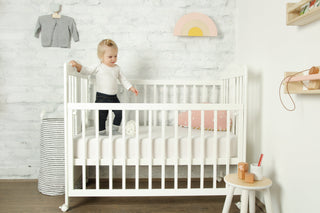
Transitioning a 2-year old from cot to bed
You know the moment. Your toddler starts climbing, nights get choppy, and the cot no longer feels safe. That was us. Our eldest had slept twelve hours after early sleep...
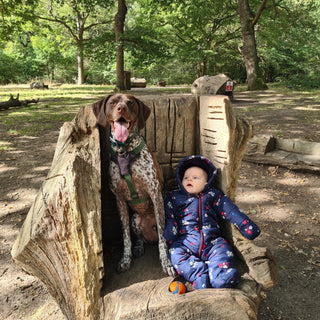
Raising a Toddler and a German Shorthaired Pointer
Getting a German Shorthaired Pointer was always on the cards for me. I grew up with two of them, and while both stories ended sadly, my memories of them are...

Organic Baby Rainy Day Essentials
Rainy days don’t have to mean staying indoors. With the right gear, breathable layers, a reliable waterproof, and fun accessories, they can be some of the most memorable adventures you...
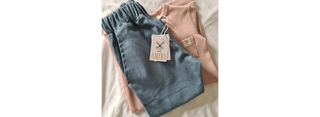
Organic Baby Clothes That Work All Year Round
Babies grow fast, and it’s tempting to fill their wardrobe with lots of season-specific outfits. But in the UK, where the weather can shift from sunshine to showers in an...

The Best Organic Baby Sleepwear for Every Season
Dressing your baby for sleep in the UK is all about balancing comfort and safety across the seasons. A few versatile organic pieces, paired with seasonal adjustments, can see you...
